
The third generation of the BMW M3, this time based on the E46 model series coupé, made its debut in the year 2000. And once again, the third edition of this world-famous sports car from Munich excelled from the start through even more performance, more dynamism and even more unique design, clearly setting this special model apart from the other versions of the BMW 3 Series.
From the very beginning, the first tests published by motor journals clearly proved that the BMW M3 is a particularly powerful sports coupé of the highest calibre, with truly unparalleled performance.
Read more of the final part of this special 3-part piece on the history of the BMW M3 by the BMW Group Press Club after the jump.
Related Posts:
The History of the BMW M3 Part 1 – E30 M3
The History of the BMW M3 Part 2 – E36 M3
Athletically built, elegant to behold.

In its design, the third-generation BMW M3 again follows in the footsteps of the first generation, albeit without spoilers and striking, extra-wide wheel arches. But thanks to the new front air dam with its integrated foglamps in elliptical design as well as large air intakes, the current M3 clearly stands out from all other versions of the BMW 3 Series.
Made of aluminium, the engine compartment lid is approximately 40 per cent lighter than a comparable lid made of steel plate. And a particular feature is that despite this lower weight, the engine compartment lid offers the same stiffness and crash safety as the steel plate lid on the “basic†Coupé.
A further sign of distinction clearly visible on the engine compartment lid of the BMW M3 again sets the car aside from other models in the BMW 3 Series – the so-called Powerdome. Precisely this is where the new power unit of the BMW M3 offers all its superior features, beneath this slight bulge in the middle of the bonnet.
A feature characteristic of the entire car in its appearance is that no single design element is for show purposes alone. Rather, all modifications versus the series model apply the strict principle of “form follows functionâ€, at the same time offering the very best in aesthetic design and cultivated style.
From the side, the body of the BMW M3 including the wheel arches is much wider than that of the “regular†Coupé (up by 20 millimetres or 0.79´´ ). Further highlights to be admired from the side are the intake “gills†and the M3 logo in the front side panels. This wider bodyshell is not just cosmetic, but is rather essential to accommodate the wider track as well as appropriately wide tyres and wheels.
The powerful look created in this way is further underscored by new M exterior mirrors in aspheric design and folding in electrically when required as an option, side-sill covers and, at the rear end of the car, an aerodynamically optimised rear dam complete with a rear spoiler. A double-chamber exhaust system with four tailpipes, finally, clearly reveals the power and performance of this exceptional car.
Engine with even more power thanks to the high-speed concept.

The power unit of the new BMW M3 gives the definition of “turbine-like performance and running smoothnessâ€, which for a long time has been the hallmark of BMWs six-cylinders, a completely new meaning. Displacing 3,246 cc, the newly developed engine has carried over the high-speed engine concept already well-known in Formula 1 to series production in the BMW M3. Now, with the engine revving at 8,000 rpm, the pistons run at a speed of more than 20 metres or 66 feet a second, almost as fast as the pistons on a Formula 1 power unit.
Indeed, no other engine in the market – and no other car – is able to offer this kind of power and performance: Maximum output of 252 kW/343 hp accelerates this 1,570 kg/3,462 lb sports car from a standstill to 100 km/h in just 5.2 seconds. Supreme efficiency at all engine speeds and under all loads, in turn, guarantees efficient fuel consumption under all practical driving conditions as well as a low level of emissions.
Ongoing development of the high-speed concept was however only one reason for developing this new engine, since the engineers at BMW M GmbH were required to fulfil a whole list of demands in creating the new engine: Lower weight, more torque and extra power as well as a wide range of useful engine speeds were just as important as an engine suitable for reliable use the world over. Particularly this final point was indeed a great challenge to BMWs engineers, since the engine was required from the start to comply with all legal requirements in terms of emission and noise control either currently in force or coming into force in the many countries in which the BMW M3 is sold.
With this high-performance engine boasting the most outstanding features and data, the development team was hardly able to use any of the regular series production parts as was still possible with the first generation of the BMW M3 back in 1985. So the only components they were able to carry over to the new M3 without modification were the oil sump gasket, the tightening cylinder for the ancillary unit belt drive, the rear crankshaft cover together with its seal, as well as the oil pressure and water temperature sensors. And the only features the new engine shares in common with the former power unit are its dimensions and the quasi-dry sump system.
Thanks to the skills of BMWs engineers, the new power unit meets all these – and other – requirements. Compared with the – already light – former engine, BMWs engine specialists have indeed succeeded in reducing the weight of the engine by another 6 per cent. And at the same time they have moved the engines centre of gravity down even further in the interest of enhanced driving dynamics.
On account of the higher engine speed and more complex function data, the engineers at BMW M GmbH also had to develop a new engine control system: MSS 54. As on the previous engine, this multi-processor system masterminds two 32-bit micro-controllers and two timing co-processors, now however operating at an even higher cycle frequency.
In all, the computer power of the new control unit is now 25 million instructions per second (MIPS). And just how important and complex the functions of this new unit are for the entire operation of the engine as such is clearly borne out by the various processes covered by the multi-processor system, which supervises the angle spread on the intake and exhaust camshafts (double-VANOS) as well as the oil level, masterminds the electronic immobiliser, and controls the electronic throttle butterflies. Working individually for each cylinder, the control unit furthermore calculates the ignition timing, the volume of fuel injected and the injection time individually for each operating cycle as a function of engine load and speed. And last but not least, the control unit provides information for service and maintenance via an elaborate and sophisticated diagnostic system.
Perfect engine management based on an in-house development.
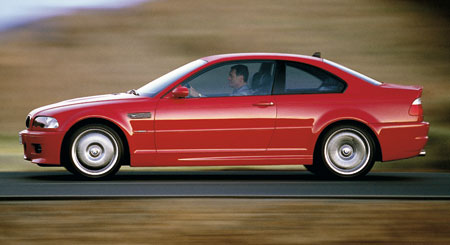
Cylinder-specific, adaptive knock control receives the knock signal via three body sound sensors, with each sensor monitoring two cylinders. The signal is adapted for each cylinder by a standardisation process geared to the respective operating point, allowing the system to program the best and most appropriate ignition timing throughout the entire ignition angle control map. Operating a switch on the dashboard, the driver of the BMW M3 is then able to activate a more sporting, that is a more progressive control line modifying accelerator travel and the throttle butterfly opening.
Electronic throttle butterfly control is now based on instant commands, with the drivers request for power being measured via the potentiometer on the gas pedal and converted into a desired signal and power level.
This wish for power is then corrected by the power manager taking the power requirements of the ancillary drive units into account as well as the
maximum and minimum power required for Dynamic Stability Control (DSC) and Engine Drag Force Control (EDFC).
The target power level calculated in this way is then set within the system, taking the current ignition angle into account. In practice, what this means for the driver is that the engine virtually “reads†his style of motoring from the position of his foot on the accelerator, providing the power required quickly and efficiently.
Optimum gas charge cycle ensured by variable camshaft spread.

Variable camshaft spread on the intake and outlet camshafts (double-VANOS), which made its world premiere in its first version in the 1992 BMW M3, ensures an optimum gas charge cycle also in the engine of the current BMW M3. On the road, this means more power, greater fuel economy, and low exhaust emissions.
Through its principle alone, VANOS technology allows appropriate management of the engine at all times. The sprocket wheel connected with the crankshaft by a duplex chain is linked to the camshaft by a spirally-toothed shaft adjustable along its axis. Such an axial shift on the shaft, on account of the spiral gearing, generates a radial, relative movement between the camshaft and the sprocket, with the spread angle on the intake camshaft being varied as a result by 60° and the angle on the outlet camshaft by 46°. Axial adjustment of the toothed shaft is provided by an adjuster piston.
Engine oil is pre-compressed up to an operating pressure of 115 bar by a radial piston pump integrated in the VANOS housing. Map-controlled high-pressure adjustment, in turn, guarantees short adjustment times and therefore provides the optimum spread angle for each operating point depending on load and engine speed and synchronised to the ignition timing and injection volume.
One engine for all countries.

The newly developed straight-six displacing 3,246 cc is the first power unit suitable for all countries and national specifications. However, as opposed to the 252 kW/343 hp ECE version, the power unit is throttled on the US version of the BMW M3 to reduced output of 333 SAE-hp (249 kW/338 DIN-hp).
This means that with an increase in engine capacity by only 1.4 per cent over the former model, maximum output is up by 6.9 and maximum torque by 4.3 per cent.
This increase in power and torque is a direct result of the high-speed engine concept, consistent control of the charge cycle and minimisation of friction effects increasing the engines specific output from 100 to almost 106 hp per litre.
Despite its high maximum running speeds, the engine offers a large useful speed range, developing 80 per cent of its maximum torque at just 2,000 rpm. No surprise, therefore, that this power unit thrilled specialists and car journalists right from the start, winning the coveted “Engine of the Year†trophy, a really outstanding award, six times in a row from 2001–2006.
Exceptional technology for an exceptional car.
On account of the high standard of performance the current BMW M3 offers whenever required, numerous systems within the car had to be configured more elaborately and with greater attention to detail than in a “regular†road car. One of these special features is the supply of lubricant to the engine by quasi-dry sump lubrication: Due to the specific arrangement of the sump and the engine tilted to the right at an angle of 30°, the engine oil would be unable to flow back to a “normal†sump under high lateral acceleration in a left-hand bend and when applying the brakes all-out.
Hence, the engineers working on the power unit connected the compressed oil pump with a reflow pump extracting oil on the right side from the small oil sump at the front and delivering the oil to the large oil sump at the rear. For all practical purposes, this completely closes the rear oil sump, with the reflow openings and compressed oil pump extraction point being precisely tailored to the acceleration forces prevailing in a car of this calibre.
Even faster than the engine: the chassis and suspension.
The engineers responsible for developing the current BMW M3 gave particular attention from the start to the chassis and suspension. Following the philosophy that “the chassis must always be faster than the engineâ€, they demanded the utmost of the chassis and suspension technology, a task obviously giving the suspension engineers a significant challenge considering the high-speed concept and outstanding performance of the M3 power unit.
However, they were able to set out from an excellent foundation right from the beginning, with the chassis and suspension of the third-generation BMW M3 being a consistent development of the former chassis. And the chassis on the second-generation is still acknowledged to this day as the benchmark in the sports car segment, being lauded by the experts of US magazine “Car and Driverâ€, for example, as the “Best Handling Carâ€.
The extra-stiff bodyshell of the BMW 3 Series Coupé, the large share of lightweight aluminium axle components, and well-balanced front-to-rear weight distribution of almost 50 : 50 were indeed ideal prerequisites for ensuring unfiltered driving pleasure with BMW standard drive feeding power to the rear wheels. And despite the somewhat larger dimensions of the new model, the chassis and suspension engineers succeeded in even outperforming the predecessors handling qualities while at the same time maintaining a high standard of everyday practical use.
DSC and the M Differential Lock for extra traction.
Introducing the third generation of the BMW M3, BMW M GmbH also made DSC Dynamic Stability Control a standard feature of the car. Hence, wheels spinning on a wet road or in snow are now a thing of the past once and for all.
The engineers responsible for the new BMW M3 were however not able to simply take over the DSC system incorporated in the “regular†3 Series, but rather had to modify the system on account of the enormous power and performance offered by the BMW M3. Particularly the immediate response of the BMW M3 power unit and the short final drive ratio call for numerous changes in the system.
From the beginning, differential locks on the rear wheels have been a standard feature on all BMW M Cars. And now, introducing the third generation of the M3, the engineers replaced the former torque-sensing self- locking differential with 25 per cent locking action by an all-new development providing a variable locking effect between 0 and 100 per cent.
Bearing the name Variable M Differential Lock, this new system is able to offer a decisive improvement of traction even in the most demanding situations, with the drive wheels running on a surface with different frictional coefficients. So in combination with DSC Dynamic Stability Control, the BMW M3 now offers driving qualities also in winter previously regarded as quite impossible on a sports car with rear-wheel drive.
High-performance brakes and M Power.
Wherever there is a lot of power from the engine, you also need a lot of brake power. Precisely with this in mind the BMW M3 was equipped from the start with an extra-large high-performance brake system featuring compound brakes in floating arrangement. In this case the inner-vented friction ring on the brake disc is connected in floating configuration with the aluminium brake cage by way of stainless-steel pins cast into the brake unit.
The result is a considerable reduction of thermal forces acting on the brake disc, with an appropriate increase in service life. Perforation of the friction ring serves to additionally reduce the weight of the brake discs by 0.7 kilos on each front wheel and 0.8 kilos on each rear wheel in comparison with conventional, single-piece brake discs.
Thanks to large, cross-drilled grey cast iron brake discs (diameter/thickness at the front: 325/28 millimetres (12.80/1.10´´ ), at the rear: 326/20 millimetres (12.83/0.79´´ ), stopping forces are really remarkable: Assisted by a 9-/10-inch tandem booster, the BMW M3 achieves deceleration of approximately 11 metres/sec2, with a stopping distance of just 35 metres or 115 feet from a speed of 100 km/h. So when it comes to brake performance, the BMW M3 once again compares very favourably with even the most thoroughbred sports cars.
More than “just†one BMW M3 in the range.
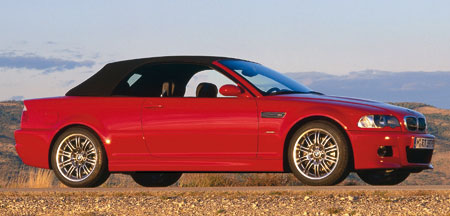
A year after introducing the BMW M3 Coupé, BMW M GmbH proudly presented the Convertible version of the M3 based on the E46 model series in 2001. While identical with the fixed-roof coupé all the way back to the A-pillar, the Convertible is nevertheless a very unique car, the striking waistline and the special character of an open-air sports car giving the Convertible an even wider and more powerful look. In all, therefore, the BMW M3 Convertible looks even more muscular and lower than its fixed-roof counterpart with which it naturally shares all technical highlights and refinements.
In autumn 2001 BMW nevertheless proved that even this exclusive standard can be enhanced to an even higher level: Presenting the BMW M3 GTR, the Company proudly launched an upgraded road-going version of the BMW M3 destined to proceed from one victory to the next in the American Le Mans Series (ALMS). So as of February 2002, the road-going version of this very special model, with engine power cut back from 330 kW/460 hp to 258 kW/350 hp, was available at a price of approximately Euro 250,000.
In technical terms the road model was related very closely to the racing version, a V8-high performance power unit with dry sump lubrication generating supreme power within the engine compartment featuring additional cooling slits. Other special features were the six-speed manual gearbox as well as a double-plate clutch again typical of a racing car.
The body was also similar to the racing version, with the roof, the rear wing as well as the front and rear air dams being made of carbonfibre-reinforced plastic in the interest of minimum weight.
The 110 per cent car.

In 2003 BMW introduced the series version of the Concept Car which had already hit the headlines at the 2001 Frankfurt Motor Show – the BMW M3 CSL, an abbreviation standing for “Coupé, Sports, Lightweightâ€.
Indeed, this BMW tradition goes all the way back to the 30s of the former century, when the legendary 328 Mille Miglia Touring Coupé first saw the light of day. This time, however, BMWs engineers interpreted the old theme in a new way, focusing not on the radical reduction of weight simply by removing individual components, but rather on intelligent lightweight engineering, that is the reduction of weight by using the best and most appropriate materials at the right point. Accordingly, BMWs experts succeeded in reducing the weight of the BMW M3 by more than 110 kilos or 243 lb, with the CSL version weighing in at just 1,385 kg or 3,054 lb.
The power unit was also upgraded, now developing maximum output in this specific model of 265 kW or 360 hp. The result was a power-to-weight ratio of just 3.85 kg per horsepower, a truly sensational figure making the BMW M3 CSL even more agile and dynamic than the “regular†BMW M3. As a result,
the M3 CSL accelerates to 100 km/h in just 4.9 seconds and reaches 200 km/h in an equally astounding 16.8 seconds. Top speed, in turn, is limited electronically to 250 km/h or 155 mph.
The lucky driver of the BMW M3 CSL benefits from further technical assistance and enhancement systems featured as standard on this unique car: BMWs Sequential M Gearbox complete with Drivelogic and the M Track Mode. This special transmission ensures a very fast gearshift within just 0.08 seconds, like in a Formula 1 racing car, by means of paddles on the steering wheel. And like on the BMW M3 equipped with SMG, Launch Control integrated in the system enables the BMW M3 CSL to accelerate from a standstill all the way to top speed, without the driver having to shift gears or watch out for engine speed limits.
Introducing the M Track Mode, BMW M GmbH added a special DSC mode carried over from motorsport as yet another highlight in the BMW M3 CSL: Now, optical indicators in the dashboard enable the driver on the race track to make maximum use of the cars longitudinal and lateral acceleration within its physical limits, with DSC intervening only when the driver reaches the absolute extreme.
Further improvement of the “basic†model.
Entering the year 2005, BMW introduced a very special feature for the M3: the Competition Package. At a price of Euro 5,300, the really discerning costumer ordering a new car was now able to choose this special feature giving the BMW M3 even more direct and sporting handling. The Package includes 19-inch wheels in the same styling as the rims on the BMW M3 CSL and fitted complete with Sports Cup tyres. In conjunction with the chassis and suspension optimised all round and the even more direct steering (with a transmission ratio of 14.5 : 1 instead of 15.4 : 1), this gives the car an even higher standard of all-round agility and performance on the road.
Benefiting from this special package, the driver of the “basic†BMW M3 was also able to enjoy the advantages of the M Track Mode carried over from the BMW M3 CSL. Brakes likewise coming from the BMW M3 CSL are naturally also included in the Package, to ensure appropriate stopping power with very short stopping distances at all times. Given all these qualities, the third generation BMW M3 is just as popular among customers the world over as its predecessors. This explains why no less than 85,139 units were delivered to customers by summer 2006, among them no less than 29, 633 Convertibles.
3 generations of M3: A spearhead in innovation
Clearly, an exceptional car deserves exceptional technology – which is precisely why new technologies and innovations have been developed time and again for the BMW M3 over a period of 20 years, enabling this unique car at all times to maintain its leadership in the area of driving dynamics.
In this process of development the BMW M3 has served consistently as both a pioneer and pacemaker. Indeed, many of the innovations featured for the first time in the BMW M3 now help to improve driving dynamics and motoring comfort also in regular production cars. And so the history of the BMW M3 is full of milestones and benchmarks in technology.
The Sequential M Gearbox: shifting gears like in Formula 1.
The conventional shift lever has been a thing of the past for a long time now in the highest realms of motorsport – instead, todays Formula 1 driver shifts gears by means of paddles on the steering wheel, keeping his foot fully on the gas pedal in the process. To make this possible, the most advanced engine electronics interrupt the flow of power from the engine for milliseconds, and the control unit shifts gears electrohydraulically, opening and closing the clutch at the same time. As a result, there is no need for a clutch pedal any more, which has therefore become superfluous.
BMW introduced the first version of this system now featured as state-of-the-art technology in Formula 1, in its successful touring cars for the race track as far back as in 1996, becoming the first manufacturer worldwide to use this technology. At the time still incorporating a stickshift in the middle, the initial system served to shift gears on one level in a sequential process like on a motorcycle. To shift up, the driver simply pulled the shift lever back without operating a clutch, to shift down he pressed the lever to the front. The advantage offered by the system was an extremely fast gearshift and absolute reliability in use, without the risk of shifting to the wrong gear.
Gaining more and more experience in motorsport, BMW then carried over this technology to its road-going cars, introducing the Sequential M Gearbox on the BMW M3 in 1997. The second generation of SMG now significantly enhanced over the first version is identical in technical terms with the regular manual gearbox on the BMW M3, six forward gears giving the driver absolute freedom in choosing the type of gearshift he prefers. Particularly the process of shifting gears by means of paddles contributes to the drivers active safety on the road, enabling him to keep his hands on the steering wheel at all times.
Benefiting from M Drivelogic, the driver of the BMW M3 is also able to adjust gearshift dynamics in the manual mode to his personal style of motoring by means of six different programs ranging from smooth but dynamic (Driving Program S1) all the way to ultra-powerful and sporting (Driving Program S5). And then there is also Driving Program S6 activated whenever DSC Dynamic Stability Control featured as standard in the BMW M3 is switched off, SMG then shifting gears just as fast as in a racing car.
The new Sequential M Gearbox also offers significant benefits in terms of safety: In a critical driving situation, for example when shifting back on a slippery surface, SMG immediately opens up the clutch within fractions of a second, preventing the car from swerving out of control as a result of excessive engine forces acting on the drive wheels. A further point is that the driver is no longer able to make a mistake when shifting gears. Hence, SMG contributes not only to extra sportiness on the road, but also to greater safety in everyday traffic.
The Variable M Differential Lock: taking bends in sporting and safe style.
Originally, BMW M Cars were fitted with a torque-sensing self-locking differential for locking action of up to 25 per cent and a consistent basic setting. Their purpose was to limit the effect of the final drive differential in the interest of optimum traction at all times. With the two drive wheels of a car covering different distances in a bend – the inner wheel obviously not travelling as far as the outer wheel – the final drive serves to compensate and set off this fundamental difference.
A differential lock, in turn, builds up locking action whenever required, for example when one of the two drive wheels threatens to spin, for example on a slippery surface. This advantage is appreciated particularly by the sporting and dynamic driver, since it helps to enhance the positive qualities of rear-wheel drive particularly when the driver prefers a sporting style of motoring and on surfaces with an above-average frictional coefficient.
A torque-sensing differential lock sets the overall torque the wheels are able to convey to the road according to the force the wheel with the lower frictional coefficient is able to transmit. But if the wheels are running on a surface with a very low frictional coefficient, for example on snow, gravel or even polished ice, the traction benefits offered by such a conventional differential concept are limited due to the very low cut-off force of the differential.
Precisely with this in mind, the engineers at BMW M GmbH have developed a brand-new system, the Variable M Differential Lock featured for the first time in the third-generation BMW M3. This lock is in a position to offer crucial advantages in terms of traction even in the most difficult and demanding situations, that is with the drive wheels running on surfaces with an extreme difference in their frictional coefficient.
Accordingly, the Variable M Differential Lock enables the current BMW M3, in combination with fine tuning of DSC Dynamic Stability Control and the cars well-balanced axle load distribution, to offer winter driving qualities previously regarded as quite impossible on a sports car with rear-wheel drive.
A further advantage of the Variable M Differential Lock is that it builds up growing locking action as a function of the increasing difference in speed between the drive wheels. Hence, a wheel “relieved†of its load, for instance the inner wheel on a fast mountain pass, is now longer able to completely interrupt the flow of drive power, with appropriate torque and power thus being maintained at all times.
Intelligent lightweight technology not only on the BMW M3 CSL.
Even a car with the power and performance of the BMW M3 offers an even greater potential for dynamic motoring through the reduction of weight. While the conventional method in reducing weight was simply to remove comfort features and all kinds of luxury appointments from the interior of a sports car, the modern engineer opts for a different solution, using modern materials such as carbonfibre-reinforced plastics (CFP), glass-fibre plastics carried over from aerospace or aluminium to save some kilos here and a few pounds there.
Introducing the BMW M3 CSL, the engineers at BMW M GmbH clearly proved their leadership in the area of intelligent lightweight technology, with the complete roof of the car being made of several layers of CFP at BMWs Plant Landshut, the home of BMWs lightweight experts. At the same time these experts have also looked at parts and components normally regarded as relatively insignificant on the body, replacing the conventional floor of the luggage compartment, for example, by a paper honeycomb sandwich structure.
VANOS: intelligent camshaft adjustment for extra torque.
Entering the market in 1992, the second-generation BMW M3 featured no less than two outstanding premieres within its engine compartment: First, this was the first BMW M3 with a six-cylinder power unit; second, this was the first BMW power unit to feature VANOS variable camshaft spread, a system infinitely adjusting the spread angle of the intake and outlet camshafts.
The big advantage of this innovation was the adjustment of the intake valve opening times to engine speed and load, optimising torque, engine power and fuel consumption all at the same time. And so, developing maximum torque of 320 Newton-metres or 236 lb-ft at 3,600 rpm, the new power unit in the BMW M3 immediately became the leader in the naturally-aspirated segment: No other normal aspiration engine at the time provided the same output (96 hp) and the same torque (108 Newton-metres/80 lb-ft ) per litre.
Digital Motor Electronics (DME).
Introduction of an engine management system able to outperform the capacity of the units available at the time was essential for appropriate control and management of a high-performance power unit like in the BMW M3. So BMW developed DME Digital Motor Electronics especially for its gasoline-engine models, a system monitoring and controlling all engine functions such as the ignition, fuel injection and oxygen sensor control with extreme precision. The result was optimum power on minimum fuel and clean exhaust emissions under all running conditions.
Stereo lambda control.
The lambda probe or oxygen sensor on cars with a controlled catalyst ensures that the fuel/air mixture in the cylinders remains at the level of lambda = 1 required for optimum efficiency of the catalyst at all times. Focusing on the BMW M3, BMWs engineers then developed the existing system of lambda control to an even higher standard, adjusting it to the two-chamber exhaust manifold in this outstanding sports car. Hence, each exhaust pipe came with its own lambda probe monitoring the composition of exhaust gases with even greater precision and, as a result, reducing emissions even further.
BMW M3 (E46):
BMW M3 (252 kW/343 hp)
BMW M3 Convertible (252 kW/343 hp)
BMW M3 GTR (258 kW/350 hp)
BMW M3 CSL (265 kW/360 hp)

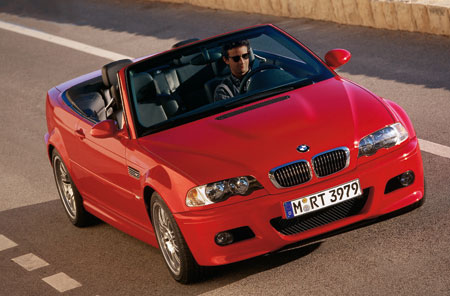

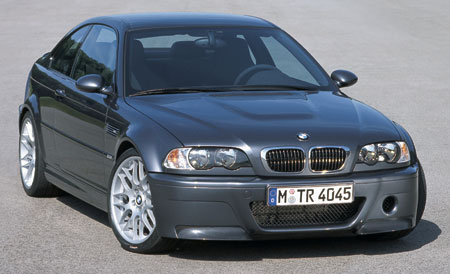
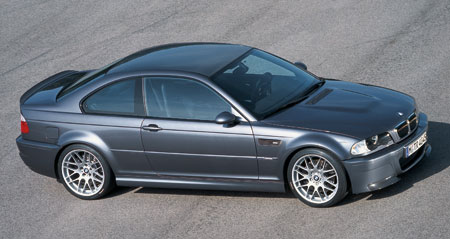
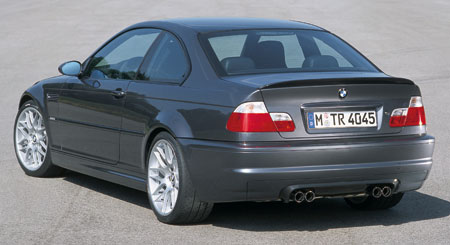








Looking to sell your car? Sell it with Carro.









































nice topic and long journey M3 to get a wonderful success…hope after this Mr Paul you can add the history of Evolution series,Impreza or Skyline..TQ
Could not believe this was the third gen m3, its still the best looking 3 series. 3 series ~2000 have those kind of headlights which I like a lot
One day.. One fine day.
actually i have a 318 is i can never find any info reguarding this model.Some people have told me that this model is actually an m3 if anybody could give me any info in reguards to this model it will be gratfully taken.